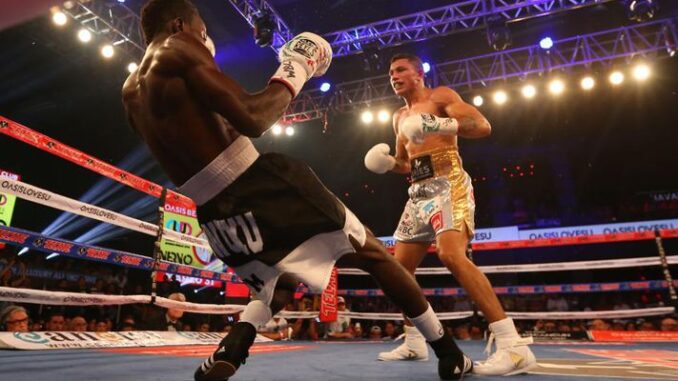
Casino Visions and Caviar Dreams
Most of us have heard this before: “I’m going to get rich this weekend. I’m feeling lucky. I’m going to triple this money I have. It was set aside for the mortgage, but I know I’m going to win. I can feel it. I was so close last time.”
It’s beyond cliché. It’s a cultural phenomenon, with the optimistic playing the part of financial lemmings, eager to swim out in the ocean too far to swim back to shore (or in this case solvency).
The people who go to casino’s with such a “plan” usually end up leaving with their tail between their legs.
Casino towns are money siphons, an instant asset reallocation strategy for the hopeful. For every sensible vacationer who takes a preset allotment of discretionary income to a gaming community for some kicks and a show, there is a reckless gambling addict hurtling toward destitution. The trick, as the song said, is to never play the game too long.
So, according to the industry, you can rely on the lady luck long shot, the win some-lose more method long endorsed by the gaming community, or inflict upon yourself the relative tedium of card counting.
What other options are there for the gaming enthusiast looking for a sincere chance to beat the house advantage?
There is, some say, a formula.
The Formula
In today’s computer culture, advanced mathematical calculations are just an app away. Computation professionals are driving technology further, faster.
Is it really surprising that in an era where the numerics of card counting have tipped the scale in blackjack, to have another contender emerge and challenge the notion that the odds always favor the house?
This has indeed happened. It comes from France. It is called the Martingale method, and was considered high tech… by eighteenth century nobility.
The system revolves around the fundamental principal of doubling your bet each time you lose until you win.
The theory is that you are bound to get one right eventually, and you then will get the payoff you pursued in the initial wager.
One interesting point about this method is that at first glance the wagerer appears to be a gambling addict on a bender. Upon closer inspection, what looks like unstable behavior shows itself to be the execution of a discipline within the chaos of wagering. It can pay.
The method practitioner must have researched the technique and learnt the entire formula, which can be fully understood in hours armed with nothing more than elementary school math.
So far so good. The rub? One had better know their game. Losses get expensive quickly. A wagerer could be risking $16 to win the $1 they set out to win. If the first bet was large, the risks can be disproportionate.
Where does this lead the hopeful wagering enthusiast who is not a card counter in possession of a substantial bankroll? This is the dead end. Or is it?
Hiring A Ringer
One can try the internet sports pickers. Called “touts,” these people are willing to do the analyses (thinking) for you.
Touts study a sport or sports, and one pays them for their expertise. Upon swiping your card, the “expert” bestows upon you their predictions, ranging in time from a day to a year.
Touts do not gamble for you. They don’t make wagers: only predictions.
The tout business is competitive, and if you do more than peruse their adverts there are a few things of which you should be aware. First, it is rumored that some of these touts don’t exist as an actual person, but are instead marketing gimmicks.
As I investigated this book, a controversy was brewing about an invented tout with the last name Chan, whose character was allegedly created to appeal to a certain demographic. How could this happen? Touts are often organized into groups. Tout houses are arranged so prospective clients can elect a soothsayer that aligns with prospect preferences.
The more diversified the choices, the more likely a prospective client is to find kinship through familiarity with one of the choices.
Not having a matching demographic option, wouldn’t it make sense for the marketing arm of such an organization to develop as many choices as possible? What if the creation of such a character was the best available option? Is it lying or promotional enhancement?
In any event this forum, like every casino ville, may not be exactly what it seems.
When employing touts, another aspect/gimmick of which you should be aware is the star rating system. Touts diversify their picks between 1 and 5 stars (5 being preferred). The star ratings are meant to establish the confidence level a tout has on a prediction.
For example, say a tout believes one team should beat another, but hasn’t much confidence, that pick would be given one star. Should the tout feel assured about a selection, the pick would receive a rating of 5 stars. Two through 4 stars implies a marginal degree of confidence in the selection.
When one looks at an advert where a tout says they have won six 5 star picks in a row, that doesn’t mean they’ve done the same with their picks made from 1 to 4 stars.
I’m not saying this scenario happens often, but without monitoring, how does one keep track? Does this mean that touts can keep five lists, and advertise the one currently doing well? The answer is yes. Forewarned is forearmed.
In addition, its hard to determine what touts mean in terms of money amounts to place according to their recommendations. Touts use the term “units” instead of dollars or pounds or yen. Classifying currency as “units” is an insurance tactic often used to confuse and mislead the unwary.
The biggest rap on these touts is that most are said to make their money by selling picks and not by using their own product and investing their own money in their predictions.
By the way, this is a flourishing industry. The clientele is alert and attentive. In fairness, the market doesn’t sustain itself on newbies or suckers. Many touts have niche specialties that pay off for their patrons.
The lesson here is to learn the terms before you invest. Only a dupe would try to cheat this learning curve.
Counting Cards
Is there a game available at every casino where the players have the edge over the house? The rumor is that that blackjack, or 21, affords the players just that chance.
Our investigation began with the movie 21, about the M.I.T. (Massachusetts Institute of Technology) blackjack team. The movie was based on a book called Bringing Down The House, and was, allegedly sponsored by the gaming industry itself.
How is it that the gambling machine would support a movie that has as premise that one of the casino’s primary moneymaking games can be outwitted and foiled by a counting approach that can be learned by the average player?
We found that even if blackjack card counting techniques do allow players a mathematical advantage over the house, there is at least one catch.
We spoke to Dennis, a blackjack card counter, who was plying his trade at the Red Garter hotel and casino in Wendover, Nevada. Dennis was willing to talk to us but refused to be photographed because he believes the picture could be formatted to use by industry facial recognition software, which could lead to his eviction by casinos.
Dennis also declined our using his last name, citing the player reward cards that track players through out their casino stay, and use the results to offer freebies and discounts. These cards are considered a substantial perk system linked to a name, making it monitored and tracked.
“The idea that you can beat the game of 21 is correct, but incomplete,” Dennis explained. The missing part of that statement seems to be the word “temporarily.”
How long does it take to become a successful card counter? Not long at all, according to Dennis, who says he has been applying “the system” for 5 years.
Dennis recounts his challenges in card counting: chief among them is not getting caught. “Card counting is 100% legal, AND if you are noticed by the casinos counting, there is a 100% chance you will be thrown out of the casino and blacklisted from ever returning.”
Dennis lowered his voice before continuing. “You are counting cards to get a small mathematical advantage. It might take over an hour to do it. Then, if you get the hand you want you still have to have your count straight and be ready to jump on it, make your money, then get out of the place before security can respond to the large increase in bet size you just made.”
“Upping the bet,” Dennis confided, “is the big giveaway in blackjack. The eye-in-the-sky (remote viewing system) will catch that every time.”
He finished with some advice and an admonition: “If you are having the free drinks the casinos offer, or are distracted by anything, you will miss your chance for profit. If you are smart, you’ll keep your winnings. Many blackjack players blow their profit on another casino game the very day they win big.”
I nodded, now understanding the casino corporation’s motivation in sponsoring a movie like 21, and being able to verify that there is indeed a table game where the player has the odds on advantage over the house, but not by much and not for very long.
The Alternative
We have, in this section, covered some of the approaches to making a profit in the casino world: the shot-in-the-dark, wager sequencing systems, counting cards and bringing in paid experts. Is there another option, one that can bring the best of the best together into a cohesive, reliable whole?
Some are claiming there is such an option. They believe results can be nearly standardized. The game is, surprisingly, the oldest known sport. Like it or not, professional fist-fighting may be the sound investment both the gambler and professional investor have been looking for.
Why boxing? According to believers, the reasons are elementary.
The first attribute seems most attractive to investors: reduction of variables. Anyone who has watched trading on the floor of the New York Stock Exchange tends to believe they are watching uncoordinated chaos, as companies allow complete strangers to monitor the funds of their clientele.
In boxing there are only four conclusions;
- One fighter prevails.
- The adversary is victorious.
- The result is even (called a “draw”). In such a case the investment is returned untouched as a break-even affair, or in sports investment parlance, a push.
- Lastly, this fourth conclusion is a biased result, usually assisting the local athlete or contestant with favorable promotional contacts.
One group benefiting from this new investment paradigm featuring boxing are called Boxing Bet Predictors. This lot contends that the above four results, these few component pieces, allow greater chance of victory on a consistent basis than their stock market counterparts.
They charge that contrary to the cultivated image of legitimacy for Wall Street, there are intentional steps taken to give the appearance of neutrality that do nothing more than assure gambling odds on par with the casino game roulette, as thorough investigation in sanctioned stock investments are called insider trading, which is illegal.
Boxing Bet Predictors contend that it is just this sort of investigative limitation in stocks that supply advantage to their own investment game. Boxing Bet Predictors can legally perform insider trading from numerous sources. Such sources include print, internet sites like blogs, forums and YouTube, as well as television options ranging from ESPN to HBO, Showtime and PPV.
Along with variable reduction and investigative liberty comes the skill development necessary to be a successful investor. To many, the science of knowing which prizefighter will best the other seems confusing and random. Boxing Bet Predictors insist it is neither.
First, one must learn when and where NOT to invest. After that, it is the relatively simple process of knowing on whom one should make their pick.
Sound complicated? Not according to the experts, in this case the boxing bet predictors, who maintain that the necessary knack is not in knowing the fighters, but the styles of the fighters, who’s elements seem to dovetail together very much like the children’s game “paper-rock-scissors.”
The learning curve for this strategy specialty doesn’t need to take years, just months. Like any new skill with a short-term learning curve, there is a key focus: upon recognizing how the few styles interrelate, accuracy rates of 75% should not just be considered obtainable, but expected.
The Conclusion
With an absence of trust in stock secured retirements, people are looking at options. This article has covered most of the credible options. Prudence and judgment must go together to benefit from any investment strategy.
Unless otherwise stated, PONIREVO and/or its licensors DO NOT own any intellectual property rights in the website and material on the website. Majority of the site’s content has been scraped and auto posted by a third party artificial intelligence program —– PONIREVO Creation Team.
Proudly WWW.PONIREVO.COM



